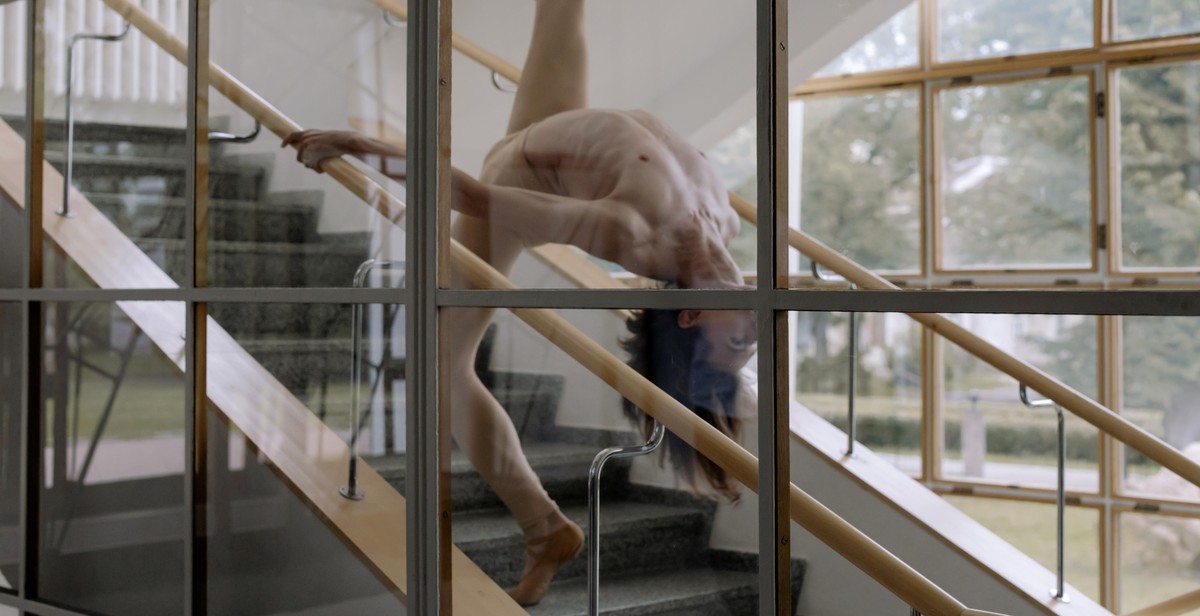How to Design a Scandinavian Architecture: Embracing Simplicity and Minimalism
Scandinavian architecture is known for its simplicity, minimalism, and functionality. It is a style that has gained popularity in recent years due to its clean lines, bright spaces, and natural materials. The focus is on creating a warm and inviting atmosphere while maintaining a sense of order and balance.
Designing a Scandinavian-style home or building requires careful consideration and attention to detail. It involves a combination of form, function, and aesthetics. The goal is to create a space that is not only visually appealing but also practical and comfortable.
The Elements of Scandinavian Architecture
Scandinavian architecture is characterized by several key elements:
- Simple and clean lines
- Neutral color palette
- Natural materials such as wood, stone, and glass
- Functional and practical design
- Abundance of natural light
These elements work together to create a space that is both beautiful and functional. The focus is on creating a sense of calm and tranquility, with minimal distractions or clutter.
Designing a Scandinavian-style Home or Building
When designing a Scandinavian-style home or building, it is important to keep the following in mind:
- Focus on functionality and practicality
- Use natural materials whenever possible
- Keep the color palette neutral and light
- Create a sense of balance and order
- Maximize natural light
By following these guidelines and incorporating the key elements of Scandinavian architecture, you can create a space that is both beautiful and functional, and that embraces simplicity and minimalism.

Understanding Scandinavian Architecture
Scandinavian architecture is a design movement that originated in the Nordic countries of Denmark, Norway, Sweden, Finland, and Iceland. It emerged in the early 20th century and gained popularity in the post-World War II era. The movement is characterized by its emphasis on simplicity, functionality, and minimalism.
Origins of Scandinavian Architecture
Scandinavian architecture has its roots in the Arts and Crafts movement that emerged in Britain in the late 19th century. The movement was a reaction against the industrialization of society and the loss of traditional craftsmanship. It emphasized the importance of handiwork and the use of natural materials. The Arts and Crafts movement spread throughout Europe and influenced the development of Scandinavian architecture.
Another important influence on Scandinavian architecture was the work of the Finnish architect Eliel Saarinen. Saarinen believed that architecture should be based on the principles of functionalism and organicism. He designed buildings that were both functional and beautiful, and he used natural materials such as wood and stone.
Characteristics of Scandinavian Architecture
Scandinavian architecture is characterized by its simplicity and minimalism. Buildings are designed with a focus on functionality and practicality. Form follows function, and unnecessary ornamentation is avoided.
One of the most important elements of Scandinavian architecture is the use of natural materials. Wood, stone, and brick are commonly used in construction. These materials are valued for their durability, sustainability, and beauty.
Another key characteristic of Scandinavian architecture is the use of light. Buildings are designed to maximize natural light and create a bright and airy interior. Large windows are a common feature, and buildings are often oriented to take advantage of the sun’s path.
Scandinavian architecture also emphasizes sustainability and energy efficiency. Buildings are designed to be energy-efficient and to minimize their impact on the environment. This includes the use of renewable energy sources, such as solar power and geothermal energy.
In summary, Scandinavian architecture is a design movement that emphasizes simplicity, functionality, and minimalism. It has its roots in the Arts and Crafts movement and the work of Eliel Saarinen. Key characteristics of Scandinavian architecture include the use of natural materials, the emphasis on light, and a focus on sustainability and energy efficiency.

Designing a Scandinavian Home
When it comes to designing a Scandinavian home, there are a few key elements that you should keep in mind. Scandinavian architecture is all about simplicity, minimalism, and functionality. Here are some tips for designing a Scandinavian home:
Choosing the Right Materials
One of the most important aspects of Scandinavian design is the use of natural materials. Wood, stone, and leather are all commonly used in Scandinavian homes. These materials add warmth and texture to a space, while also creating a sense of connection to the natural world.
When choosing materials for your Scandinavian home, it’s important to look for high-quality, sustainable options. Avoid synthetic materials and opt for natural fibers like wool and linen instead.
Color Palette and Textures
The color palette in a Scandinavian home is typically neutral and muted. Whites, grays, and light blues are all common choices. These colors create a sense of calm and tranquility in a space, while also allowing natural light to bounce around the room.
Textures are also important in Scandinavian design. Layering different textures like wool, linen, and leather creates depth and interest in a space. Don’t be afraid to mix and match textures to create a cozy, inviting atmosphere.
Furniture
Scandinavian furniture is known for its clean lines and simple shapes. Functionality is key in Scandinavian design, so furniture should be both beautiful and practical. Look for pieces that serve multiple purposes, like a coffee table with built-in storage or a sofa that can be converted into a bed.
When it comes to seating, comfort is also important. Look for pieces with plush cushions and supportive backs. Scandinavian design is all about creating a cozy, inviting space where you can relax and unwind.
Lighting
Lighting is a key element of Scandinavian design. Natural light is highly valued, so it’s important to maximize the amount of light that enters your home. Use sheer curtains and light-colored walls to reflect natural light around the space.
Artificial lighting is also important in Scandinavian design. Look for fixtures that are both functional and beautiful. Pendant lights, floor lamps, and table lamps can all help to create a warm, inviting atmosphere in your home.

Maximizing Space and Functionality
Scandinavian architecture is all about simplicity and functionality. Therefore, it is essential to maximize the use of space while maintaining a minimalist design. Here are some tips on how to achieve this:
Open Floor Plans
Open floor plans are a hallmark of Scandinavian architecture. They allow for better flow and communication between rooms, making the space feel larger and more welcoming.
One way to achieve an open floor plan is to remove walls that separate the living room, dining room, and kitchen. This creates a more expansive space that is perfect for entertaining and family activities.
Another way to create an open floor plan is to use furniture strategically. For example, instead of a large sofa that blocks the view of the entire room, consider using smaller chairs and tables that allow for better sightlines and flow.
Storage Solutions
In Scandinavian architecture, storage is not just a practical concern but also an aesthetic one. Therefore, it is essential to integrate storage solutions into the overall design of the space.
One popular storage solution in Scandinavian architecture is built-in shelving. These shelves can be used to display decorative items and books while also providing storage for everyday items like dishes and glasses.
Another storage solution is to use multi-functional furniture. For example, a coffee table with built-in storage can be used to store blankets, magazines, and other items while also serving as a functional piece of furniture.
Finally, it is important to think vertically when it comes to storage. Tall bookcases and cabinets can provide ample storage space without taking up too much floor space.
| Tip: | Consider using furniture with hidden storage compartments, such as ottomans with storage space inside. |
|---|
By incorporating open floor plans and storage solutions into your Scandinavian architecture design, you can create a space that is both functional and beautiful. Remember to keep things simple and minimalist, and let the natural beauty of the materials and design shine through.

Embracing Minimalism in Scandinavian Architecture
Scandinavian architecture is known for its simplicity, minimalism, and functionality. The concept of “less is more” is deeply ingrained in Scandinavian design philosophy, which prioritizes the essentials and eliminates unnecessary elements. Minimalism in Scandinavian architecture is not just an aesthetic choice but a way of life that emphasizes sustainability and environmental consciousness.
The Benefits of Minimalism in Scandinavian Architecture
Minimalism in Scandinavian architecture offers several benefits, including:
- Reduced environmental impact: By eliminating unnecessary elements, Scandinavian architecture minimizes waste and reduces the environmental impact of construction.
- Increased functionality: Minimalist design prioritizes functionality and practicality, making spaces more efficient and user-friendly.
- Enhanced aesthetics: The simplicity and elegance of Scandinavian architecture create timeless designs that are both beautiful and functional.
- Cost savings: By eliminating unnecessary elements and focusing on functionality, Scandinavian architecture can save costs in construction and maintenance.
Sustainability and Environmental Consciousness
Minimalism in Scandinavian architecture is rooted in sustainability and environmental consciousness. Scandinavian designers prioritize the use of sustainable materials, such as wood, and focus on energy efficiency and eco-friendliness. The result is a design philosophy that is both aesthetically pleasing and environmentally responsible.
| Materials | Features |
|---|---|
| Wood | Renewable, energy-efficient, and durable |
| Concrete | Durable, fire-resistant, and energy-efficient |
| Glass | Energy-efficient and provides natural light |
By embracing minimalism and sustainability, Scandinavian architecture offers a design philosophy that is both timeless and responsible. The focus on functionality and practicality ensures that spaces are efficient and user-friendly, while the use of sustainable materials and eco-friendly features reduces the environmental impact of construction.
